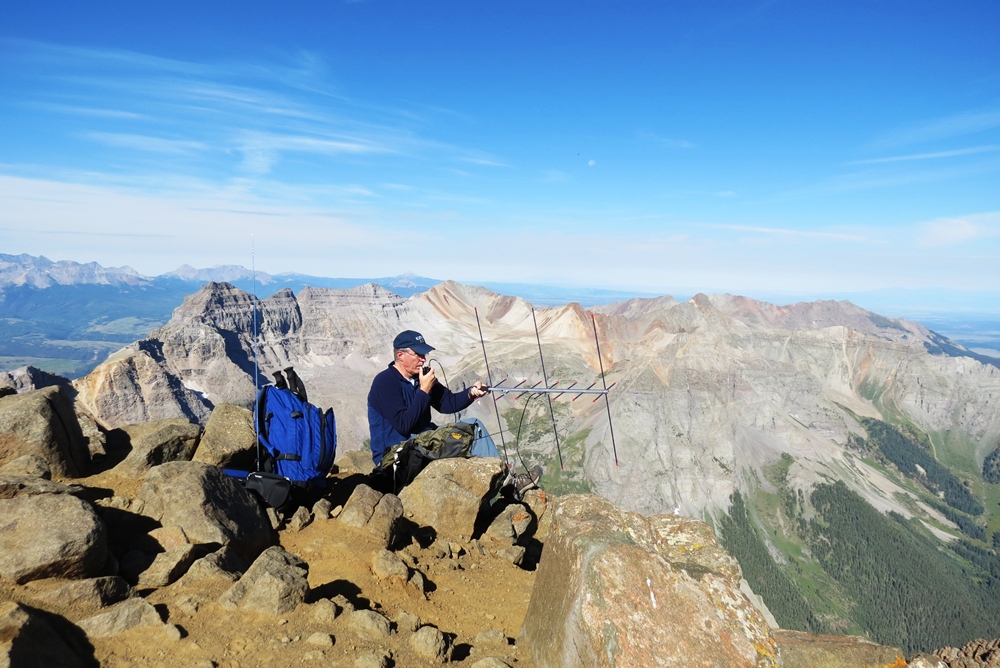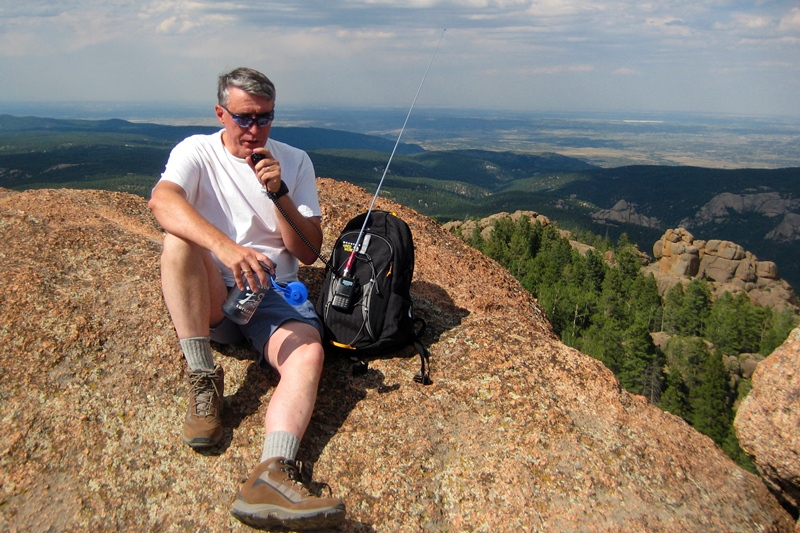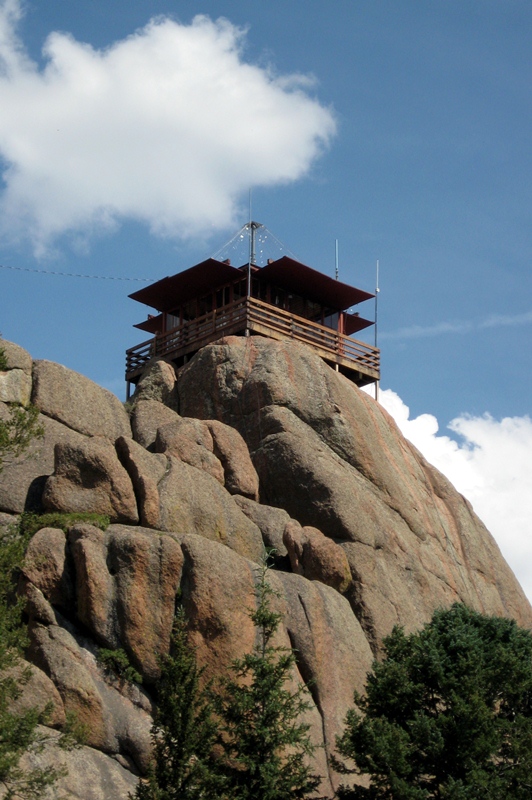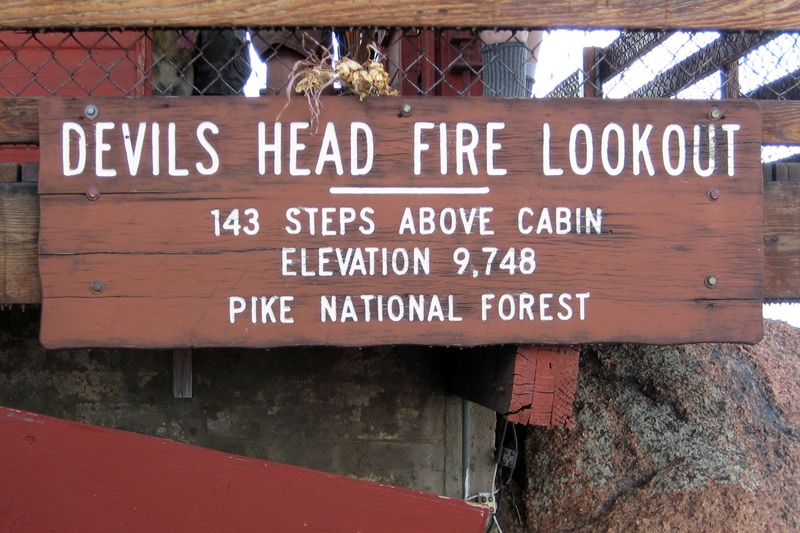Posts Tagged ‘VHF’
 TechDay 2012 – Your Start in Amateur Radio
TechDay 2012 – Your Start in Amateur Radio
 Come join us on Saturday, September 15th, 2012 (9:00 AM to 2:00 PM) at the Tri-Lakes Monument Fire Administration Complex at 166 Second St. in beautiful Monument, CO for a half day workshop aimed primarily at the new Technician Licensees to help them get started in ham radio. While you’re here you’ll learn what it takes to be a ham radio operator, brush up on your DXing skills, test your own ham radio equipment, check out some sweet mobile radio installations, and ask an Elmer “What’s so cool about 10 meters?”
Come join us on Saturday, September 15th, 2012 (9:00 AM to 2:00 PM) at the Tri-Lakes Monument Fire Administration Complex at 166 Second St. in beautiful Monument, CO for a half day workshop aimed primarily at the new Technician Licensees to help them get started in ham radio. While you’re here you’ll learn what it takes to be a ham radio operator, brush up on your DXing skills, test your own ham radio equipment, check out some sweet mobile radio installations, and ask an Elmer “What’s so cool about 10 meters?”
Getting started in ham radio has never been so much fun!
Presentations
9:30 am – Youth DXpedition to Costa Rica
by Anna Veal WØANT
10:30 am – Mountaintop Operating
by Steve Galchutt WGØAT
11:30 am – Home Station Setup
by Anna Veal WØANT
12:30 pm – Getting On the Air
by Brandon Hippe KDØPWF
1:30 pm – Radio Equipment 101
by Shel KFØUR
* Each presentation is approximately 15 minutes with 5 minutes of Q&A at the end. Events subject to change
Booths – Open 9AM to 2PM
Get Your Radio Programmed with Local Repeater Freqs by RT Systems
hosted by Kyle Hippe KYØHIP & Cole Turner WØCOL
Check Your Radio Performance
hosted by Bob Witte KØNR
See an HF Station
hosted by Dan Scott WØRO & Stu Turner WØSTU
Ask Any Question – The Elmer Booth
hosted by Paul Swanson AAØK & Shel KFØUR
Understand Mobile Installations
hosted by James Bucknall KDØMFO & Ethan Bucknall KDØMFP
Getting Your Ham Radio License
hosted by Brandon Hippe KDØPWF & Eric Hippe NØHIP
Ham Radio & Public Service
hosted by Randy Meadows KNØTPC
Sponsors
Tech Day 2012 is proudly sponsored by the WØTLM Amateur Radio Club and the Pikes Peak Radio Amateur Association.
Get the one page flyer in pdf format here.
Direct any questions to Bob KØNR
 A Great Day of Mountaintop Radio
A Great Day of Mountaintop Radio
Here is the report on the Colorado 14er Event operation from Mount Sneffels. Joyce K0JJW and I drove our Jeep up to the “upper trailhead” for Sneffels, arriving at 6 AM. The 14ers.com web site describes the trailhead and route.
On paper, the climb is not that difficult but there is quite a bit of loose rock that you have to navigate…annoying on the ascent and very tiring on the descent. We reached the summit at 9AM and fired up the radio gear.
Mt Sneffels (and the other peaks in the San Juans) is a long distance from many of the fourteeners. Take a look at the fourteener map on 14ers.com. Previously, I had operated from Pikes Peak where you hear tons of stations calling and Mount Antero which is centrally located so you can easily work all of the 14ers. Operating from Mt Sneffels is different — kind of like you have fallen off the edge of the earth.
We soon found that the omnidirectional antennas were not that effective at pulling out the other 14er stations and that the Arrow II yagi antenna was the way to go. I’ll so some more analysis on this later.
Most of the contacts were made with the Yaesu FT-817 but we also used a pair of HTs. Note that we used both FM and SSB.
I had my Yaesu VX-8GR burping out APRS packets for the upper half of the hike but it appears they only made it to an IGate when we were on the summit.
The weather was awesome so we stayed on the summit until 11:40 AM. After we finally worked Pikes, we decided to head down. The clouds were building but we did not expect it to amount to much. But the storm moved in quickly and we did get snowed on while hiking down.
Radio Log
Local Time Freq Callsign Location Comments 0934 144.200 USB N0KE near Silt Phil, 100 miles away 0949 432.100 USB N0KE near Silt 0954 147.420 FM W0NX Quandary Keith, strong signal 1006 147.420 FM WE7C near Cortez Glen, 70 miles away 1018 147.510 FM WO9S Mt Evans Jon 1049 147.450 FM KM5TY Huron Strong signal 1058 147.435 FM KD0EGE Lincoln 1100 147.420 FM KC0VFO aeronautical mobile 1110 147.420 FM KT0AM Shavano Mark, strong signal 1115 147.420 FM KI6ASW Blanca Strong signal 1130 144.200 USB KB0SA Pikes Peak Eric 1132 144.200 USB W0STU Pikes Peak Stu 1135 147.480 FM W0STU Pikes Peak Stu
Joyce ended up logging for me and pointing the antenna, so she only worked Glen WE7C on 147.42 MHz. She also got to explain to the other hikers what the heck we were doing. People seemed genuinely interested and when we told them we just talked to Quandary or Evans, they’d say “that’s cool.”
This was a Summits On the Air activation, the first ever for Mount Sneffels (W0/UR-001). All in all, a good day playing ham radio in the mountains.
Thanks to everyone that came out to play.
73, Bob K0NR
 Colorado 14er Event This Weekend
Colorado 14er Event This Weekend
Just a quick reminder that the Colorado 14er Event is happening this Sunday. I am going to try to make it up Mt Sneffels down in the San Juan range and operate 2 Meters and 70 cm. This will also be a SOTA activation (W0/UR-001).
For more information, see http://www.k0nr.com/wordpress/2012/07/colorado-14er-event-now-with-sota/
73, Bob K0NR
 A Great Weekend on VHF
A Great Weekend on VHF
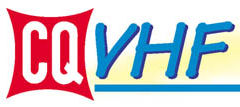 One of the things that makes a VHF contest so much fun is that you never know how its going to play out. One of the major factors is sporadic-e propagation which is, well, sporadic. Sometimes we get rewarded with decent propagation and sometimes we get completely skunked.
One of the things that makes a VHF contest so much fun is that you never know how its going to play out. One of the major factors is sporadic-e propagation which is, well, sporadic. Sometimes we get rewarded with decent propagation and sometimes we get completely skunked.
In the morning, before the 2012 CQ World Wide VHF Contest started, the 6 Meter band was open from Colorado to the east. The band continued to be open to various locations for most of Saturday, even late into the evening. I made my last contact on 6 Meters to the Pacific Northwest after 10:30 PM local time.
On Sunday morning, 6 Meters gave us some more fun but it was not nearly as good as Saturday. Instead of strong signals and consistent runs, the signals were variable and QSOs were often a challenge. Sometimes it was like pulling teeth. This contest only uses two bands: 6 Meters (50 MHz) and 2 Meters (144 MHz). As 6 Meters pooped out, the action moved to 2 Meters. Fortunately, we had a number of rovers out that helped activate some of the rarer grids. Thanks W3DHJ, AB0YM, KR5J and W0BL.
This is probably my best score ever in the CQ WW VHF Contest, due to the excellent propagation on Saturday and some station improvements I’ve made over the past couple of years.
Band QSOs X pt = QSO pts. X Grids = Points
---------------------------------------------------------------
50 337 1 337 130 43810
144 34 2 68 13 884
---------------------------------------------------------------
TOTALS 371 405 143 57915
Claimed score = 57915All in all, a great weekend on the VHF bands.
73, Bob K0NR
 Dear Yaesu, Please Make a VHF FT-950
Dear Yaesu, Please Make a VHF FT-950
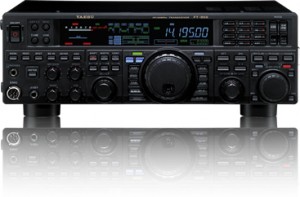 About a year ago, I bought a Yaesu FT-950 transceiver with HF through 50 MHz. I’ve really enjoyed that radio. This weekend I am working the CQ WW VHF Contest and giving it a good workout on 6 Meters. It is set up quite nicely for contesting with a decent receiver, built-in antenna tuner, DSP processing, dual VFOs, built-in voice and CW keyers, etc. For 2 Meters, I use my trusty old FT-847, which has always been one of the favorite rigs. I have to admit that the 847′s receiver is a bit wimpy when it comes to operating on a crowded band with strong signals, and it only puts on 50 Watts on 2 Meters.
About a year ago, I bought a Yaesu FT-950 transceiver with HF through 50 MHz. I’ve really enjoyed that radio. This weekend I am working the CQ WW VHF Contest and giving it a good workout on 6 Meters. It is set up quite nicely for contesting with a decent receiver, built-in antenna tuner, DSP processing, dual VFOs, built-in voice and CW keyers, etc. For 2 Meters, I use my trusty old FT-847, which has always been one of the favorite rigs. I have to admit that the 847′s receiver is a bit wimpy when it comes to operating on a crowded band with strong signals, and it only puts on 50 Watts on 2 Meters.
So here’s my request:
Dear Yaesu,
Please add 2 Meters to the FT-950 transceiver. When you obsoleted the FT-847, you left a big hole in the ham radio market. The FT-847 was supposed to be a satellite rig, which is nice but not required. I really just want a radio that can put out 100W on 2 Meters, with the great features of the FT-950. Note that I am not asking for 70 cm operation, but if you want to toss that in, it would be cool. You can even leave out some of the HF bands if that would make it easier.
Thanks and I await your reply.
73, Bob K0NR
 SOTA Activation Without The Tears
SOTA Activation Without The Tears
I recently confessed blogged about a not-that-well-executed SOTA (Summits on The Air) activation, in How Not to Do a SOTA Activation. This past weekend, I made another run at it with much better results. Still, I did use a slacker low impact approach to the activation.
My hiking partner spouse and I decided to go for a hike on Sunday afternoon. It had been many years since we had climbed up to the fire lookout on Devils Head in Pike National Forest, so that sounded like a great destination. There is an excellent view at the top (fire lookouts tend to be like that) and the weather was awesome. I checked the SOTA list, and sure enough, Devils Head is a legitimate SOTA peak (W0/FR-051).
The hike is about 2.8 miles round trip with an elevation gain of 950 feet. I put this in the category of a good tourist hike…with just enough huffing and puffing to make you think you worked for it but not so much that it kills you. Here’s the topo map and route taken from everytrail.com: 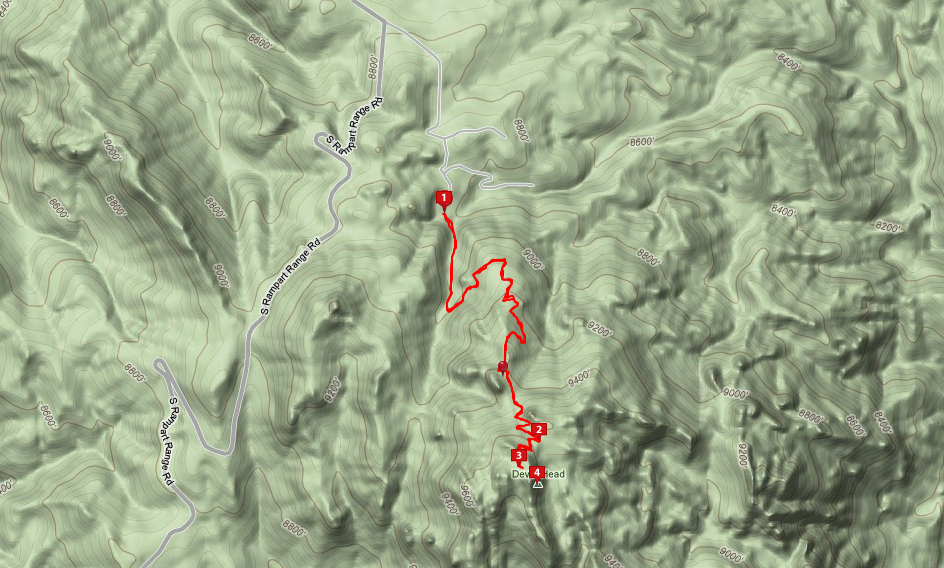
As I put together my daypack, I tossed in my Yaesu FT-60 handheld radio and a 1/2-wave vertical whip antenna. This was going to be a 2M FM operation only. (I don’t have anything against HF, but there is something magic about VHF propagation with a little altitude.) Then I sent a quick message to a couple of the local email lists asking for people to try to work me on the summit. We drove to the trailhead and started our hike up the trail, which is heavily used but well maintained.
The fire lookout is not a tower. It sits on top of a large rock formation with stairs leading up the side of the rock.
When we got to the top, we spent some time enjoying the view and catching our breath. As the sign says, the stairs have 143 steps which take you to an elevation of 9748 feet.
I got out the radio and started calling CQ on 146.52 MHz. Ted (NØNKG) came right back to me…I think he probably saw my email message. Over the next half hour, I worked a total of 7 contacts: NØNKG, N2RL, NØGWM, W7RTX, WB9QDL, KØDEN and WXØPIX. I even remembered to bring along a log book and a pen to write it all down.
Bill Ellis staffs the fire lookout for the US Forest Service most of the time during the summer. He handed me a card that certifies that I climbed up to the lookout station. Note that this card indicates that it is the 100th anniversary of the fire lookout! And Bill’s been doing this for 26 years. Cool!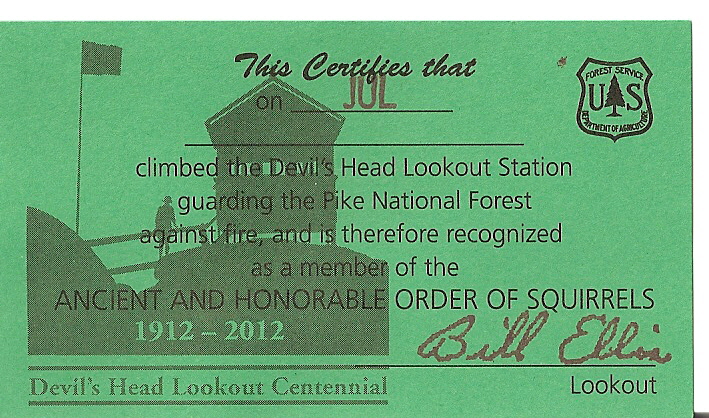
Various people have said that Devils Head is a must do hike in Colorado and I have to agree (whether you are doing a SOTA activation or not). It turns out that I was the second person to activate Devils Head as a SOTA summit, with Chuck (N6UHB) having done it in October 2011. I’ll probably do some more of this since it is a nice blend of ham radio, hiking and enjoying the view from a high spot.
73, Bob K0NR
 LHS Episode #085: David Rowe on Codec2
LHS Episode #085: David Rowe on Codec2
 Please join us for a special episode of Linux in the Ham Shack. In Episode #085, the hosts interview a vibrant and brilliant engineer from Adelaide, South Australia, named David Rowe. He is the mastermind behind the codec2 open voice codec among several other worthy and equally brilliant open source projects. He dabbles in VoIP, hardware, Open Source advocacy, engineering, voice compression, amateur radio and other endeavors far too numerous to name. David Rowe is definitely one of the more special people occupying our planet and our interview with him is nothing short of amazing. Please tune in and have your mind blown. We look forward to the overspray.
Please join us for a special episode of Linux in the Ham Shack. In Episode #085, the hosts interview a vibrant and brilliant engineer from Adelaide, South Australia, named David Rowe. He is the mastermind behind the codec2 open voice codec among several other worthy and equally brilliant open source projects. He dabbles in VoIP, hardware, Open Source advocacy, engineering, voice compression, amateur radio and other endeavors far too numerous to name. David Rowe is definitely one of the more special people occupying our planet and our interview with him is nothing short of amazing. Please tune in and have your mind blown. We look forward to the overspray.
73 de The LHS Guys
